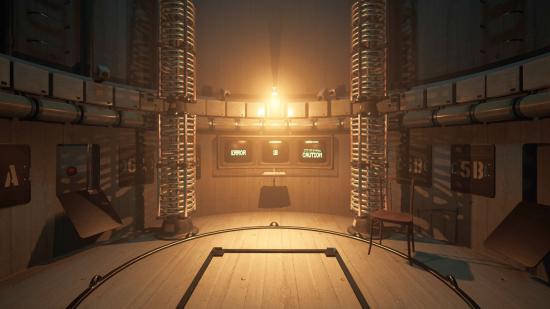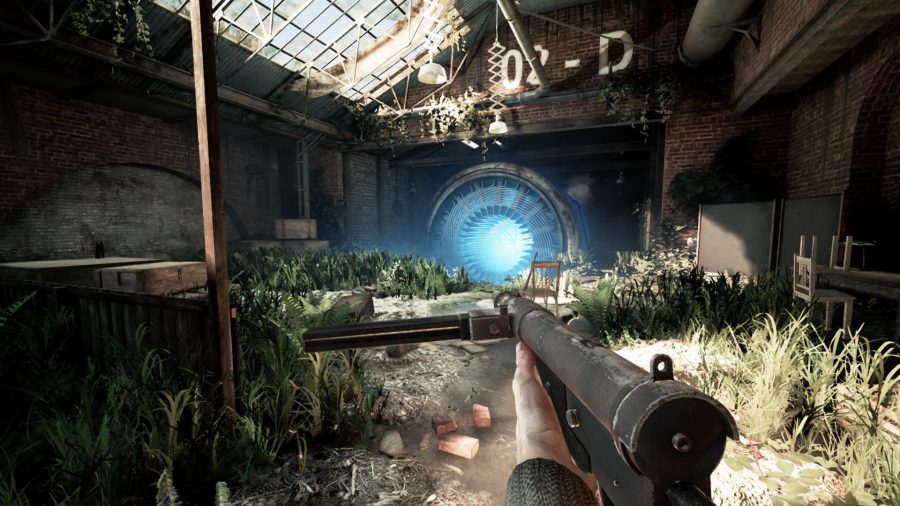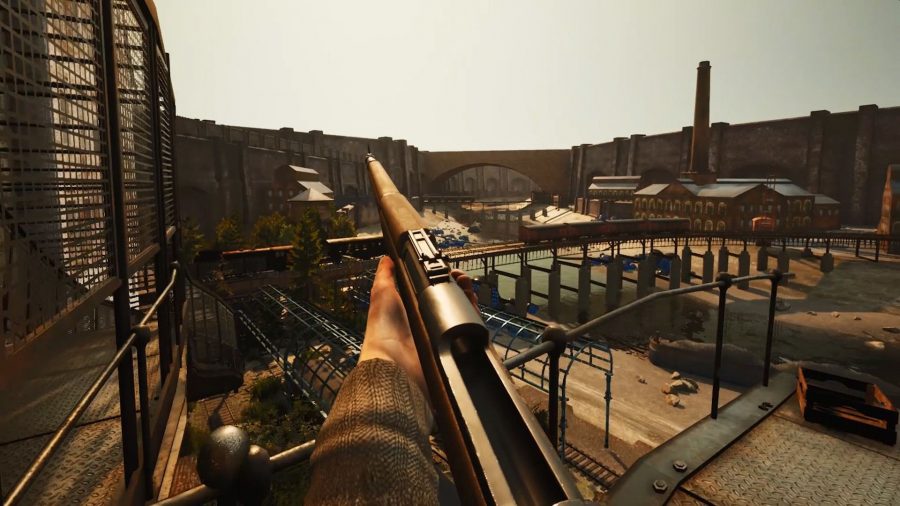As the world celebrates the fall of the Berlin Wall and the reunification of Germany, you find yourself tumbling down a deadly rabbit hole, in search of a man who has disappeared inside a secret research facility somewhere near East Berlin. This is Industria, and it’s being created by David Jungnickel and Steve Chapman – two former modders and map makers who’ve learned the tools of game development as they’ve worked on their passion project.
Industria was conceived through the developers’ shared love of Source engine games like Half-Life 2 and Portal, but, after using Unreal Engine 4 on the previous indie project where they met one another, they decided to stick with it for Industria. That’s given them a chance to learn the skills they’ve needed along the way, as well as the flexibility to be able to experiment with new ideas as they’ve arisen.
“Neither one of us have any programming experience and so UE4 was a clear option for us as we had all the functionality available to us with the use of visual scripting,” Chapman tells us. “We could easily duplicate projects and experiment with other ideas, or even remove entire systems quickly and easily with Blueprints.”
Blueprints is Unreal’s visual, node-based system for creating object-oriented scripting within the engine. Developers can use this system to set up complex, interactive game elements by setting up nodes, events, and variables and connecting them together with wires, creating an easy-to-understand sequence of functions without having to type a line of code.

“Visual scripting allowed us to implement mechanics and functions into the game without that knowledge”, Chapman says. “We learn something every day by simply working on the game, and particularly at the moment – we’re trying to figure out ways of optimising the game further, and of course Unreal has answers for that too!”
Industria takes some thematic and visual cues from the surreal works of David Lynch – think Mulholland Drive or Twin Peaks to get a sense of the vague atmosphere of dread and the notion of time as being non-linear and you won’t be far off the mark. But it’s also influenced by what Chapman and Jungnickel identify as distinctively Eastern European visuals and thematic notes in one of their favourite games, Half-Life 2.
“We wanted something we can relate to, something authentic and filled with details that can only be added by someone who actually lives there”, Jungnickel, a Berlin native, says. “That was why Half-Life 2 felt so unique for us. Viktor Antonov, the art director of Half-Life 2, comes from Bulgaria. City 17 is an absolute fetish on east European cities like Bucharest, Prague, or Sofia, as they were the reference he deeply understood and felt attached to. This transfers into the game and is, in our opinion, one of its strongest elements.”
Cold War-era Berlin has been mythologised in pop culture from time to time, but generally from a western and specifically American perspective. For Jungnickel in particular, it’s important that Industria avoids this kind of good-guys-versus-bad-guys portrayal.
“In Industria we are only touching the GDR [East Germany, or the German Democratic Republic] and the East German setting very briefly,” he explains. “Most of the game takes place in a parallel dimension, far away from border controls, political unrest, and Cold War escalation. This is not another western-based bash on Eastern Europe and the Soviet Union. In Industria they are not evil, and the US is not the hero saving the world. We are independent and so is our view on the subject. As I come from Berlin, I know the stories of my parents who grew up in West Berlin and who were scared by GDR border control soldiers and spied on by state police, but I also know the perspective of relatives that grew up on the other side, talking positively about that time.”
Read more: Check out the best FPS games on PC
In Industria, players will explore a city infested with the offshoots of one man’s past research, which spreads physically through a network of cables that strangle and subvert like a technological cancer. And while there’s combat, the enemies you’ll be fighting are mechanical beings rather than humans.
“We have a general problem with the clash of carefully told stories with believable characters, who then evolve into mass murderers throughout their journeys in shooters”, Jungnickel says. “I see all these well-written characters in video games making moral decisions in cutscenes, only to take hundreds of lives just afterwards. Who can deeply relate towards a mass murderer?”
Industria is due for release some time in 2021. For more information, check out the Steam page. Unreal Engine 4 is now free. Unreal Engine 5 is due to release next year.
In this sponsored series, we’re looking at how game developers are taking advantage of Unreal Engine 4 to create a new generation of PC games. With thanks to Epic Games and Bleakmill.



